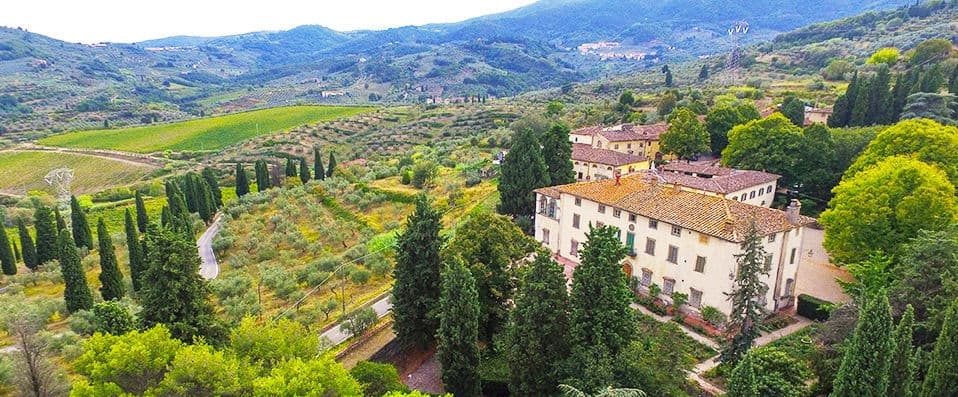The Sommelier's Box
Capezzana, ‘Villa di Capezzana’ Carmignano 2017
- Regular price
- $40.00 USD
- Regular price
-
- Sale price
- $40.00 USD
- Unit price
- per
Couldn't load pickup availability
Region: Carmignano, Tuscany, Italy
Varietal: 80% Sangiovese, 20% Cabernet Sauvignon
Tasting notes: Aromatically this wine has notes of black ripe fruits, as well as dehydrated blood orange peel, and a hint of savory herbs. On the palate there are flavors of black and red fruits, just barely ripened, warm baking spices, with sweet and smooth tannins. A lovely example of Tuscan Red done extremely well.
Producer: Few wineries in the world possess the stature, respect and devotion that the Contini Bonacossi family has cultivated and maintained over five generations with their Tenuta di Capezzana winery. The estate is located 12 miles west of Florence in the Carmignano sub-zone, one of the oldest recognized wine producing areas in Tuscany. Ancient Etruscan artifacts have shown that grapevines were cultivated in the area for wine production over 3,000 years ago. The first reference to Capezzana dates to 804 A.D. An ancient parchment stored at the Florentine state archives shows the granting of a lease of vineyards and olive groves for the cultivation of wine and olive oil to a place called Capezzana. The Capezzana we now know began in 1922, when Count Alessandro Contini Bonacossi and family returned from living in Spain to purchase an estate from widowed Sara de Rothschild, alongside two neighboring farms known as 'The Pogetto' and 'Trefiano'. The estate was divided into three respective parts.
The first vintage bottling of Villa di Capezzano was in 1925. In 1945 Ugo, grandson of Alessandro received a degree in Agriculture and devoted himself to increasing the quality of the wine produced. Five generations of the Contini Bonacossi have successively run the winery since, yet the values of family and fine wine have remained the same.
Vineyard and Winemaking: Carmignano was first incorporated into the Chianti Montalbano appellation; however, with a unique microclimate, soil composition and the use of international grapes, the Carmignano wines were very different than the Chianti being produced by their neighbors. Due to the tireless efforts of Count Ugo, DOC status was finally granted to Carmignano in 1975. In 1988 the appellation finally received DOCG recognition, making it the smallest DOCG in Tuscany. In order to qualify as a Carmignano DOCG wine, the blend needs to include a small amount of Cabernet Sauvignon (10-20%). In the 1500s, the Queen of France, Catherine de Medici, had clippings of Cabernet Sauvignon - then known as "uve Francesca" - sent to Carmignano from Bordeaux. Much of those plantings disappeared with the phylloxera epidemic, but Cabernet was replanted by Count Ugo in the 1950s. When Carmignano received DOC status in 1975, it became the first sanctioned wine to include Cabernet Sauvignon in Tuscany. A few other French varietals are planted in the region, but Cabernet is the preferred complement to their Sangiovese. In 2009, Capezzana began farming organically and achieved official certification for the vineyards and wines in 2015.
Share




